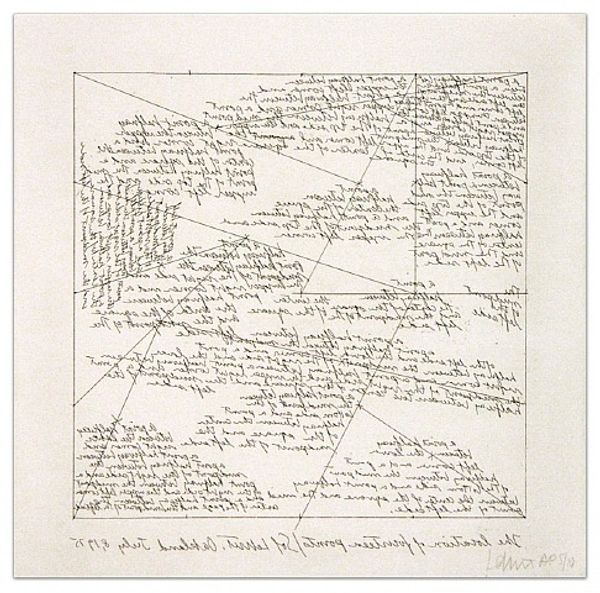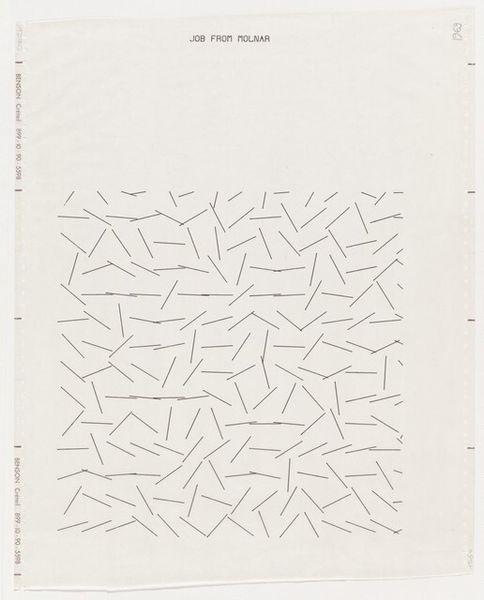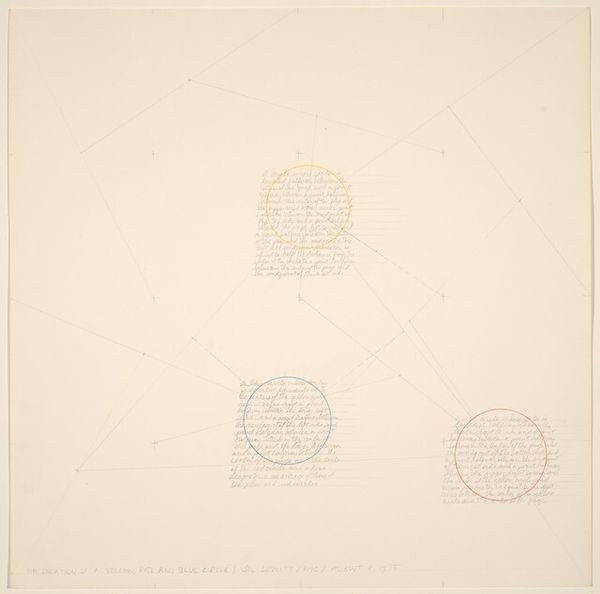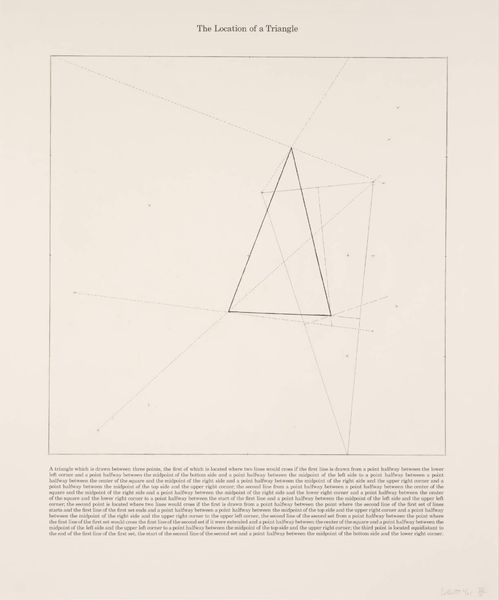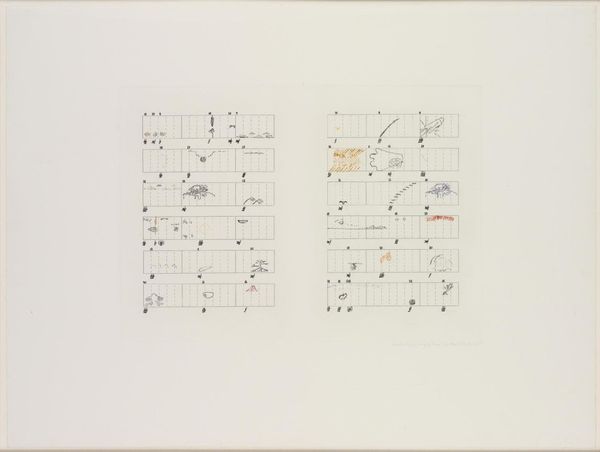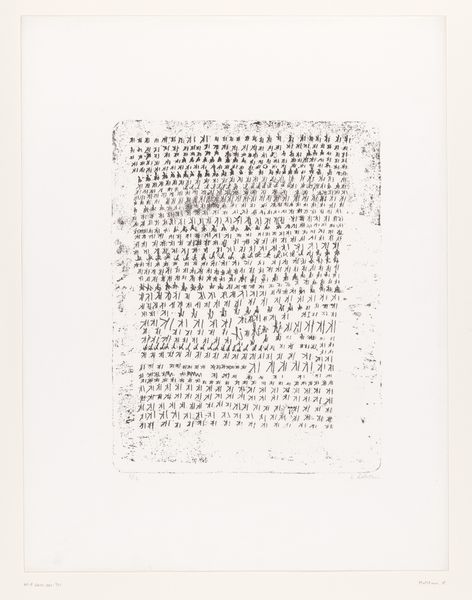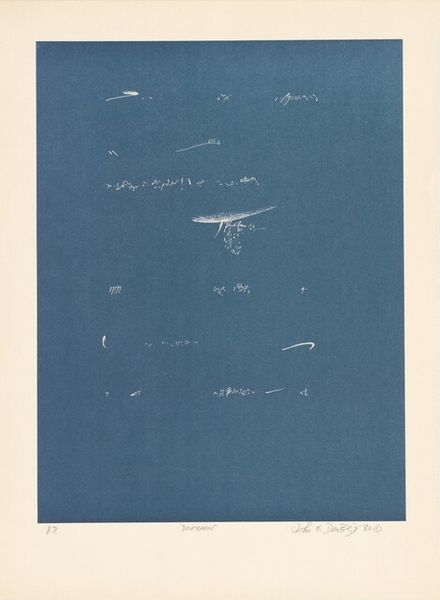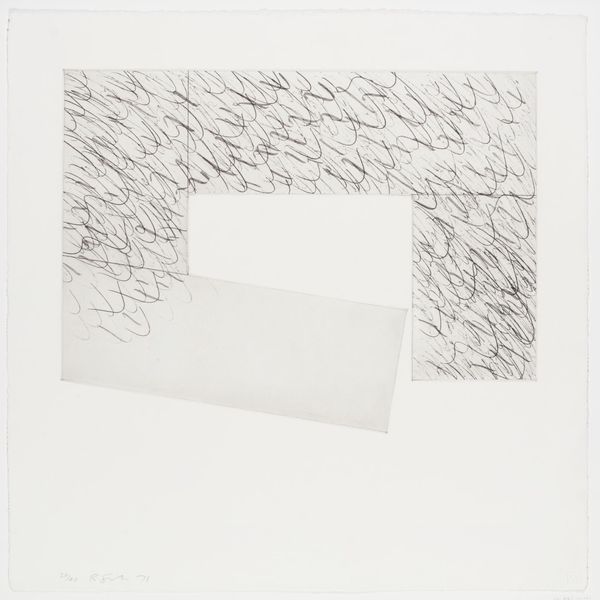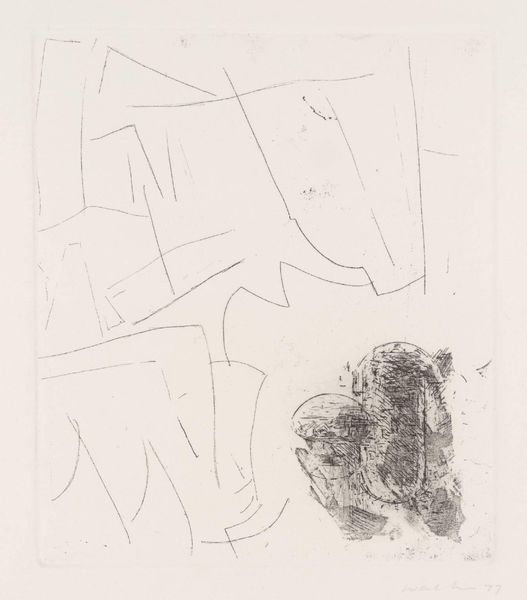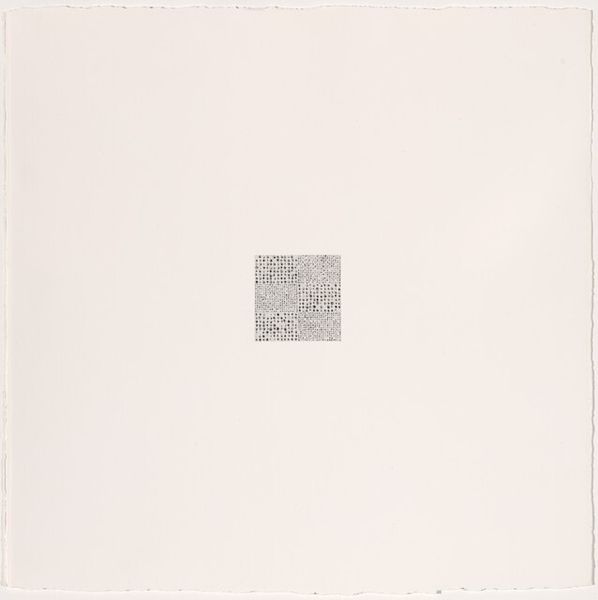
The Location of a Straight Black Line, a Not-Straight Yellow Line, a Broken Red Line and a Straight Blue Line 1975
0:00
0:00
drawing
#
drawing
#
conceptual-art
#
minimalism
#
geometric
#
line
Dimensions: sheet: 38.1 × 38.42 cm (15 × 15 1/8 in.)
Copyright: National Gallery of Art: CC0 1.0
Curator: Right, let's look at Sol LeWitt's, *The Location of a Straight Black Line, a Not-Straight Yellow Line, a Broken Red Line and a Straight Blue Line*, created in 1975. A wonderfully whimsical mouthful, isn't it? It's a drawing, quite simple in its… austerity, I'd say. Editor: Austerity indeed! It strikes me as a blueprint for…something incredibly fragile. The pale paper, those delicately placed lines of color, like the ruins of something once carefully diagrammed. Makes me think of maps for forgotten desires. Curator: That’s an interesting read. LeWitt was deeply involved in Conceptual art and Minimalism; there's this coldness often associated with both that downplays expressiveness. These are almost…directions for art. And that title? The most literal descriptor imaginable. It’s funny because the long title becomes conceptual art on its own right. Editor: But what’s more profound: the directive *itself*, or its imperfect realization? I’m looking at those scribbled notes placed somewhat like geometric anchors that almost form written maps; he offers instructions that almost invite error or interpretation, suggesting a level of control—yet also acceptance for serendipity to play its hand in a world governed by process art? And what can we make from the symbolical lines? I feel these lines carry some psychological implications in terms of organization and mental mapping... or even breaking away with a perfectly organized system and moving towards freedom. Curator: The interesting detail here, in the instructions LeWitt follows. Lines extending from the corner toward center lines point towards the lines described in the title, right? But the lines on each instructions form some of its own angular lines that suggest more than meets the eye: are they constraints, boundaries, paths… or perhaps cages that keep certain lines captive in the composition? What do you make of that in the overall impact in context of conceptual art? Editor: Ah, but maybe *that's* the true essence, isn’t it? These lines become about *limiting* our options – visually and metaphorically - which pushes us into something unknown. LeWitt provides everything, while forcing us towards our own personal limits. Almost making our imagination tangible. It is indeed wonderful how such basic graphic statements can push towards our freedom and limit our thinking!
Comments
No comments
Be the first to comment and join the conversation on the ultimate creative platform.
